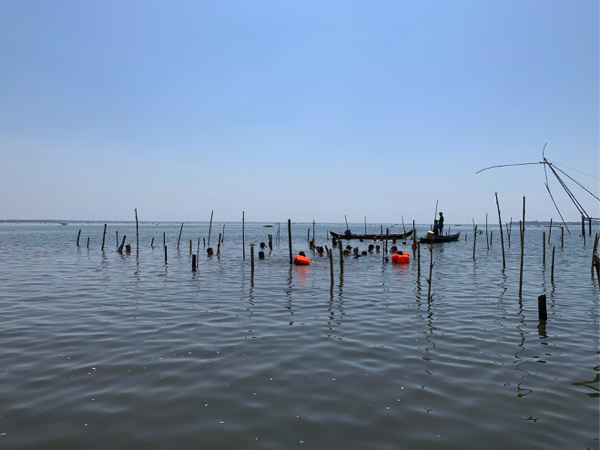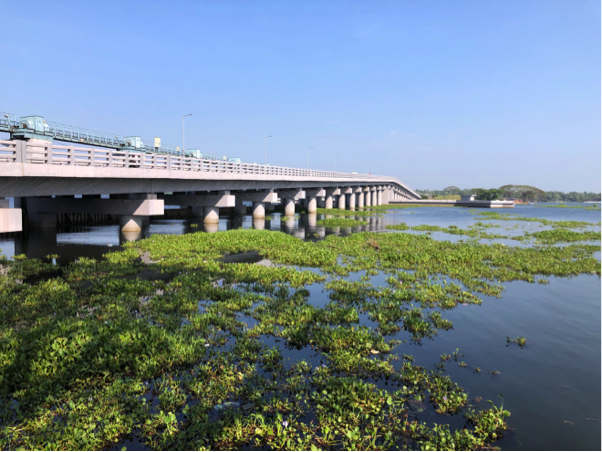By Georgia Locke
Bachelor of Economics/Bachelor of Advanced Studies (Political Economy)
This week, we are spending time in Vembanad, a Ramsar-listed wetland system in Kerala. Today we worked in Vembanda Lake with the NGO Ashoka Trust for Research in Ecology and the Environment (ATREE) to help reinstate what was once a naturally occurring fish sanctuary, simulating the roots and shade of mangroves with bamboo poles and bamboo palms.
The fish sanctuaries are designed to provide a place where fish can breed, with the intention of increasing their dwindling population in Vembanad. To protect the breeding fish, the sanctuaries are designated non-fishing zones, with close spacing between poles providing a bulwark against boats and canoes.

The fish sanctuary work is an effort to renew natural capital and build new economic models. ATREE are using human and physical capital (bamboo and other materials) to reinstate a naturally occurring phenomenon, mangroves, which were removed for economic purposes.
Standing on the edge of Vembanad Lake, it’s hard to imagine that these concrete-reinforced banks were once thick with mangroves. Sanju Soman, a representative for ATREE, painted this vivid picture for us, describing how the mangrove forests that used to line the river banks have faced considerable deforestation in the last fifty years. The majority of this deforestation was done to provide solid foundations for real estate.
This history of environmental remodelling for economic gains resounds throughout the Vembanad ecosystem.
The Vembanad Lake itself was remodelled through the commission of the Thanneermukkom Barrage in 1975. The barrage creates a physical barrier between the Arabian sea and the lake. It is located at the narrowest portion of the lake and divides it into two halves: a brackish northern side and a freshwater southern side.

The barrage was constructed with the economic aim of limiting the damage caused by salt intrusion to rice-paddies and hence increasing the harvest. Previously, plantations would flood with saltwater during the monsoon and undermine the zero-salinity required for rice growth. This meant that rice could only be farmed once a year; during the dry season. By facilitating regulation of the lake’s salinity, the barrage allows for an additional rice harvest.
However, like the removal of mangroves for real estate, the Thanneermukkom Barrage has had significant environmental consequences for the Keralan backwaters. We heard stories of this firsthand through our discussion with the Muhamma Panchayat’s leaders and fishermen. Among other impacts, they spoke about the invasion of water hyacinths and the reduction in aquatic animal populations. The latter has been particularly problematic for Vembanad resident’s due to their economic dependence on fishing and clam mining.
The Vembanad Lake is a microcosm for the tensions that play out perennially between economic and environmental interests and stakeholders. It highlights the tendency for policies or projects that artificially alter natural ecosystems and landscapes to be implemented for economic purposes, with negligible consideration for environmental consequences.
The question remains: can these environmental consequences be negated or fixed with man-made solutions? The Vembanad fish sanctuary demonstrates that this may indeed be possible.

